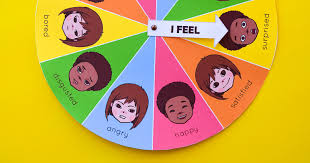
Children with autism aren't able to recognize and interpret emotions and emotional cues and might seem to lack empathy towards others. Yet emotional awareness helps children to form social interactions in early life. It helps them to interact with other children. By the age of 4 months, children should normally be capable of recognizing sad, happy, or other facial expressions, and reciprocating to other's emotion by the age of 7 months. Despite this, it is possible to teach these children how to recognize emotions and empathy.
Tips to start with before the activities
-
Age-appropriate activities

The activities targeted at helping these children should suit their developmental age. An appropriate method of communication, vocabulary, activity, and stimulus should be used.
One emotion at a time This should be done even when teaching basic emotions of happiness, sadness, anger, and fear. You can switch to other emotions when the child appears comfortable in identifying facial expressions for one emotion.
-
Use visual cards and pictures

Pictures and visuals should be chosen over dynamic expressions when teaching children with ASD. The children can focus on facial components and expressions better when a picture has an exaggerated facial expression.
It also helps to help the children know what parts of the faces signal a given emotion in a picture and how the part looks like when those emotions are being signaled. This is done by pointing out that specific parts including eyebrows, eyes, etc. pictures of specific parts can also be used to show this.
Additionally, white or blank backgrounds achieve this better. Most of these resources can be downloaded online even for free. With very young learners, you can use smileys and exaggerated cartoon faces.
Visual stores and children's books are good for labeling emotions for kids.
-
Make it engaging and fun

Play-based emotion recognition activities have the best outcomes. Play-based learning is proven as one of the most effective ways of teaching new skills. For this reason, it helps to understand what fun activities those are. Examples include Mr. Potato Head, Transporters video series, Pantomime play, colored pictures.
-
Use a mixture of visuals and activities

Using a mixture of pictures that show different emotional expressions helps. However, recognizing emotions in pictures does not guarantee that a child will recognize emotions and expressions in real life. Hence, the activities should help them to recognize the emotions in real-life situations. The best way is to use a variety of setups across a variety of stimuli.
Activities to help children with autism
-
Puppets

Puppets are considered less overwhelming and for this reason, commonly used as introductory tools in emotional awareness lessons for kids. Children with autism find them safe in expressing emotions and thoughts. For that reason, they are used to help children form connections with others. They can be used to promote discussion of different emotions and support children with autism.
In teaching these children emotional awareness, let the puppets tell stories to the children. The puppets can be made to act according to the emotions described. They can also utter words corresponding to those emotions, like "this made me happy" etc, according to the emotions being taught.
-
Emotion color wheels

Colored wheels help children with autism to monitor the specific emotions they might have difficulties in expressing. The best place to start is aligning the primary colors with the emotions they represent - red for anger, yellow for love, etc. Finally, a color wheel should be placed where it is accessible for the children. Children can be taught to create emotion color wheels to learn how people express and how to express their own emotions.
-
Anger Management skill cards

This is a set of 12 colored cards that help children identify and deal with anger emotions. The cards contain pictures showing anger management expressions like taking deep breaths, drawing their anger and writing about their anger, counting, jumping, walking away and talking about their problems. Listening to music, practicing a hobby, playing, and squeezing a ball are also included in the cards.
Another activity that helps to teach emotional awareness to children includes using emotional card games, which are adjusted according to the difficulty level based on the total number of cards used and the use of different cards.
Products you might be interested in
TAP-TAP Led Lights - Sensory and Visual Stimulation-10% Discount

E-book: Recognizing and Regulating Emotions










2 comments
Hi my grandson is on the spectrum. Considered twice exceptional. He has meltdowns. He is 8. I so want to help but I don’t know how to I am very stressed for my daughter and son in law …I offer some suggestions. My daughter is not sharing her situation with anyone and it makes it that much more difficult. She won’t even let me tell anyone. But the sight are becoming obvious to others and I think it would be very helpful to have people and family to help. Please help me to help my child and grandchild. Any help or direction would be greatly appreciated I am at a loss. Thank you Rosemary . Damato.
Where can we purchase these things and do you have religious material for 3-6? Thank you.
Leave a comment